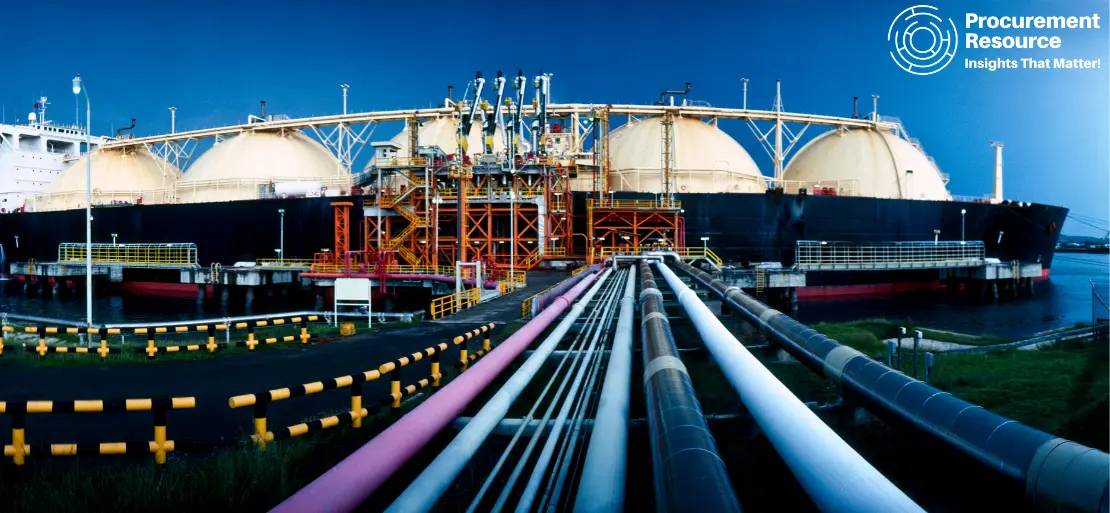Analysis: China’s Actions Indicate Strong Growth in Gas Demand as it Rushes for LNG Deals Despite High Spot Prices

China’s rush for long-term contracts with the United States for Liquefied Natural Gas was sparked by record-high spot LNG prices; however, the deals also indicate repressed demand for uncontracted volumes, favourable pricing offered by suppliers, and the advantages of US LNG such as location flexibility and optimism regarding demand in the foreseeable future.
Even while a broader relaxation of geopolitical tensions is unlikely, the agreements come amid prospects of collaboration between Beijing and Washington on trade, climate change, energy, and China, essentially becoming the world’s single-largest LNG importer surpassing Japan.
No less than eight Chinese companies, such as state-owned national oil companies, had signed around a dozen long-term deals with overseas suppliers for a total volume of nearly 25 million metric tonnes per year, over half of which were signed during the September-November period when spot LNG prices reached a record high.
This is over a third of China’s yearly LNG imports and it does not include the short-term agreements and preliminary agreements made this year. When the COVID-19 pandemic halted buying interest throughout the sector in 2020, just one long-term deal was struck by Chinese gas company Shenergy with United Kingdom’s Centrica.
Several elements of these agreements stood out: 15-20-year contracts were frequent, despite the industry trending toward shorter-term agreements for years, over 40% of all sales were for US LNG, and market sources indicated remarkable inexpensive tolling rates to encourage buyers.
According to Jeff Moore, Manager of Asian LNG Analytics at S&P Global Platts, the underlying surge in natural gas demand is probably driving the current increase in Chinese long-term LNG contracts. Moreover, LNG and natural gas are expected to be significant aspects of China’s long-term energy transformation plan, likely to support the relatively long duration of the contracts. In addition, Platts Analytics expects China to be covered by long-term agreements around 70% in 2021, with this number projected to go somewhat due to recent contract signings.
However, Chinese LNG import demand is likely to expand within the next 5-10 years, and even with the new contract signings, China’s long-term supply coverage is only expected to rise to roughly 75% by 2025. It is believed that additional contracts will be signed, particularly because long-term contracts elsewhere in the area are nearly ending and the amount of new supply coming online is still uncontracted, which might be seen as another chance for Chinese end-users to lock in supplies.
Due to the recent trade disputes and record low spot prices that disincentivized long-term contracting activity, the United State’s proportion of China’s LNG imports has been relatively low. Australia remained China's single-largest LNG provider in the first ten months of 2021, with 25.9 million metric tonnes, although its percentage of overall imports fell to 39.7% from 43% in 2020. Meanwhile, LNG imports from the United States accounted for barely 11% of China's total, up from 3% the year before. In 2021, the United States is expected to be China's second-largest supplier.
Sinopec and CNOOC, through its trading arm Unipec, acquired the highest amount of long-term LNG contracts in 2021, scooping up more than half of the deals totalling more than 15 million mt/year, primarily from Venture Global and Qatar. This year, national oil giants like Sinopec increased their term contract volumes to limit their significantly more extensive exposure to the unpredictable spot market. There is fierce rivalry among suppliers for the Chinese market, with Qatargas and Russia's Novatek accounting for 24 percent and 15 percent of new contract signings in 2021, respectively.
Sinochem, Guangzhou Development, and Shenzhen Gas are three new participants that have signed long-term LNG contracts for the first time. Several other second-tier energy companies, such as ENN, Foran Energy, and Shenergy Group, have struck agreements, demonstrating the significance of China's gas market liberalisation for future LNG demand. Sinochem, one of China's major state-owned traders, imported its first LNG cargo on behalf of downstream consumers in October, citing a 40-year history in crude oil trading and two foreign procurement platforms in London and Singapore as grounds for entering the LNG sector.
Despite the fact that Sinochem has no LNG receiving terminals or gas pipelines, PipeChina's offering of third-party access allows Sinochem to enter the LNG market. Additionally, while Sinochem has limited processing capability, the majority of its contracted LNG will be resold. In recent years, second-tier gas providers have been more active in the LNG market, but they have had to rely on spot LNG markets due to a lack of trading competence and banking reputation. This is likely to alter over time.
China Gas's recent agreement to form a joint venture with Vitol in Singapore's commodity trading hub and Guangdong Development Group's agreements to resell contracted volumes to city gas companies in the Hong Kong-Macao Greater Bay Area signal a broader effort non-NOCs to seek term contract protection.




